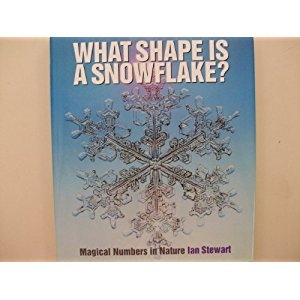What Shape is a Snowflake? Magical Numbers in Nature
 Author: Ian Stewart (2001), Wiedenfeld & Nicolson, Lewes, UK
Author: Ian Stewart (2001), Wiedenfeld & Nicolson, Lewes, UK
Amazon has a number of reviews that provide a bit more information. Also available on Amazon.ca.
A look at the table of contents and you'll quickly think of ways this book can be useful as a resource for understanding patterns in nature. The book has three main sections, Principles & Patterns, the Mathematical World, Simplicity & Complexity. The examples within each section are well illustrated to show the mathematics of patterns. The book has very little on the actual math but explains the concepts by showing how they are applied in nature and why.
Under the first chapter Principles and Patterns, Stewart gives examples of the patterns governing snowflakes, crystals, stripes, honeycombs, spirals and patterns in space. He also discusses what constitutes a pattern: order, disorder, symmetry, self- similarity and dynamics. There is even a chapter on spots and stripes. The discussion of motion uses examples like the wheel spider and the sidewinder snake (self-explanatory) to illustrate and remind us of nature's diversity in getting from one place to another. The patterns of living creatures are used to show the relationship between mathematics and life itself.
